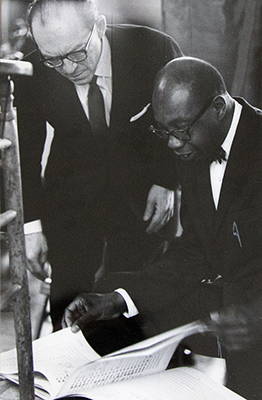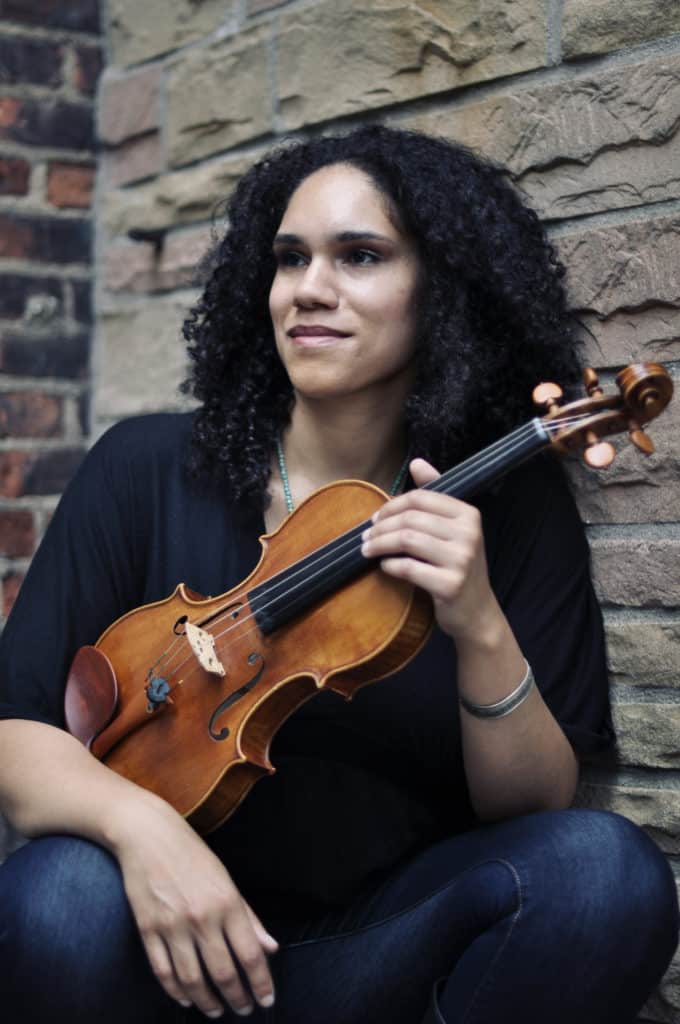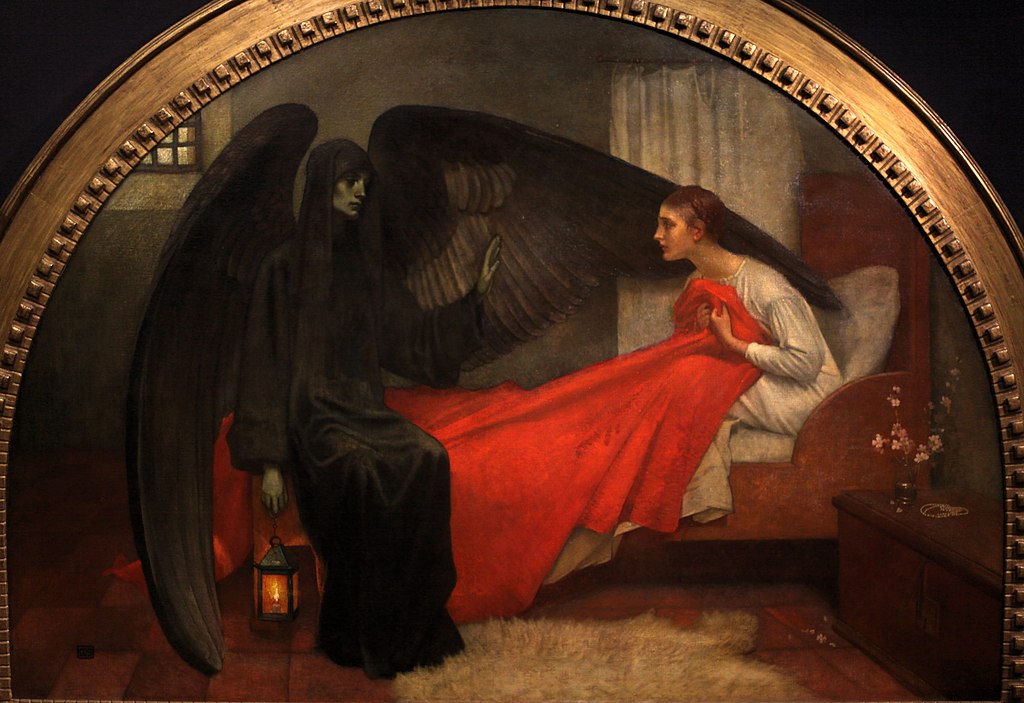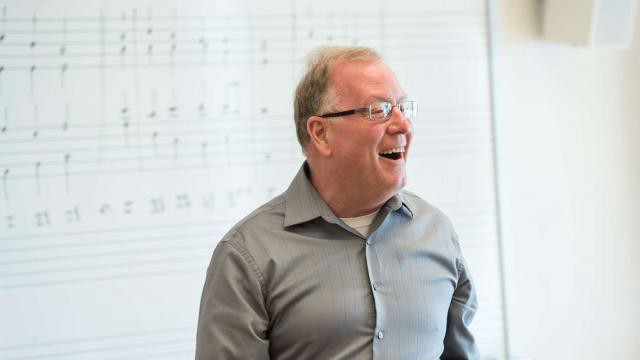
George Walker (1922–2018)
Lyric for Strings (1946)

“One finds something … that provides the genesis to motivate the direction in which you want to go.” That’s George Walker speaking in 1987, encapsulating the wisdom of a career that embodied American music at its most aspirational and accomplished.
Lyric for Strings provides an ideal entry point for newcomers to Walker’s music. Starting out as the slow movement of his String Quartet No. 1 and dedicated to his recently-deceased grandmother Malvina King, it threads any number of needles adroitly and convincingly—it’s sparse but not austere, mournful but not mawkish, taut but not terse.
Antonio Vivaldi (1678–1741)
The Four Seasons, Op. 8 Nos. 1–4 (published 1725)
The Venetians called him Il Prieto Rosso, The Red Priest. Antonio Vivaldi really did have bright red hair and he really was a priest, albeit not a particularly good one; what biographical information has come down to us points more to bon vivant than to dedicated cleric. Whatever ambiguity attends Vivaldi’s personal life and character, there can be no doubt about his place in music history—although that place was a long time coming. It was The Four Seasons, the first four of a collection of string concertos from 1725, that brought about Vivaldi’s 20th-century revival, catapulting him from obscurity to his current eminence amongst the titans of the Baroque.
We begin in the Spring, a scene of unruffled sunny contentment, lightly moistened by a brief spring shower. In the second movement, sleepy shepherds snooze under the trees while insects buzz and dogs bark; in the third we join a happy dance, complete with bass drones representing bagpipes.
The Summer heat sets in and a lazy torpor ensues. Nevertheless the violin soloist is called upon for an array of imitations—cuckoos, turtledoves, breezes and rushing winds—in passages that often anticipate the free-form sound effects of a later age. The Adagio slow movement hints at a change in the weather, which duly arrives in the third-movement Presto: a summer storm depicted in all its facets, flashes of lighting, booms of thunder, and streaky splashes of warm rain.
Autumn is the time of harvest; the crops come in and celebratory dancing ensues. Sleep follows in a second movement that ranks amongst Vivaldi’s most harmonically complex inspirations, but soon enough exhortations from the violin-turned-bugle summon us to the hunt, accompanied by yapping dogs and galloping horses.
Finally, Winter: ice, snow, freezing cold, but silvery chill beauty nonetheless. A warm and cozy fireside awaits us in the second movement, while outside the blasts of winter winds have the last word in a sonorous finale.
Jessie Montgomery (b. 1981)
Starburst (2012)

Think of a modern musician’s career, not as a straight line, but as an ever-expanding sphere. Possibilities, potentialities, and commitments arise and are in turn embraced and explored as need be. Think of flexibility, of imagination, of curiosity, of boldness.
Then think of Jessie Montgomery, violinist, teacher, and composer with an expansive vision across multiple disciplines and deep commitment to social justice. Consider her recent album Strum: Music for Strings, which writer Thomas May describes as demonstrating “her work as both composer and performer; her fluent command of classical language, of the vernacular idioms of African American spirituals and folk music, and of the intersectional potential of the string quartet; and her engagement with social justice.”
Montgomery tells about the work: “This brief one-movement work for string orchestra is a play on imagery of rapidly changing musical colors. Exploding gestures are juxtaposed with gentle fleeting melodies in an attempt to create a multidimensional soundscape. A common definition of a starburst, ‘the rapid formation of large numbers of new stars in a galaxy at a rate high enough to alter the structure of the galaxy significantly,’ lends itself almost literally to the nature of the performing ensemble that premiered the work, the Sphinx Virtuosi, and I wrote the piece with their dynamic in mind.”
Franz Schubert (1797–1828)
String Quartet No. 14 in D minor, D. 810 “Death and the Maiden” arr. Gustav Mahler (1824/1896)
When Franz Schubert was busy composing—which was most of the time—he could be exasperatingly distant, even to his closest friends. In 1824 the painter Moritz von Schwind noted with wry amusement that “if you go to see him during the day, he says, ‘Hello, how are you?—Good’ and goes on writing.” Schubert’s focused industry made him prolific, with well over a thousand works to show for the mere eighteen years of his career. It has also frustrated his biographers, who must attempt détente with an artist who dwelled largely in the privacy of his own mind. Schubert’s opinions, his beliefs, his love life, his sexual orientation, even the exact cause of his early death remain unsettled, all subject to heated debate, and all very much in the eye of the beholder. If an aura of mystery is an essential component of our ideal of the Romantic artist, then Schubert—appealing, ambiguous, and ultimately enigmatic—embodies that ideal to perfection, and his “Death and the Maiden” string quartet bears profound witness to that embodiment.

Dramatic, volatile, emotionally supercharged, painted throughout in twilight hues shot with lightning flashes, the D Minor Quartet takes its nickname from Schubert’s song Death and the Maiden, featured in the second movement as a theme subjected to variations. Those expecting the prettified Schubert of such sentimental biographies as Blossom Time are in for a big surprise: this is a Gothic Schubert, conjuror of stormy scenarios, haunted moonlit nights, and anxious forebodings. In 1898 Gustav Mahler began, but eventually abandoned, a project to transcribe the quartet for string orchestra. Fortunately, he got far enough along for later arrangers to finish the job, providing posterity with a late Romantic ‘take’ on an early Romantic masterpiece.
Program Annotator Scott Foglesong is the Chair of Musicianship and Music Theory at the San Francisco Conservatory of Music, and a Contributing Writer and Lecturer for the San Francisco Symphony. He also leads the California Symphony’s ground-breaking music education course for adults Fresh Look: The Symphony Exposed.
The California Symphony’s FOUR SEASONS featuring Alexi Kenney takes place Saturday, Nov. 6 at 7:30 PM and Sunday, Nov. 7 at 4 PM at the Lesher Center for the Arts. Tickets are $44 to $74 and subscription packages of 3 or more concerts start at $33 per concert. Buy tickets online or call or visit the Lesher Center Ticket Office at 925.943.7469, Wed – Sun, 12:00 noon to 6:00 pm.

